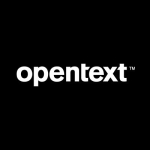I worked with Databricks pretty recently. The particular design processes involved in Databricks were also a part of that specific design/architectural process.
We have used the solution for the overall data foundation ecosystem for processing and storage on a Delta format. We have also seen use cases where we were trying to establish advanced analytics models and data sharing where we leverage the Delta Sharing capabilities from Databricks.
A very valuable feature is the data processing, and the solution is specifically good at using the Spark ecosystem.
There are some aspects of Databricks, like generative AI, where they are positioning things like DALL-E. They're a little bit late to the game, but I think there are some things that they are working on. Generative AI is catching up in areas like data governance and enterprise flavor. Hence, these are places where Databricks has to be faster, and even though they are fast, I'm not sure how they'll catch up and get adopted because there are strong players in the market.
Databricks is coming up with a few good things in terms of integration. But I have to put one point forward that covers multiple aspects, which is the ease of use for the end user while operating this particular tool. For example, a tool like ADS gives you a GUI-based development, which is good for the end user who does development or maintenance. Looking at the complexities of data integration, a GUI might not be easy, but Databricks should embrace something on the graphical user development front because it is currently notebook-driven. Also, in terms of accessing the data for the end user, Databricks has an SQL interface, similar to earlier tools like SQL Management Studio. Since people are mostly comfortable with SSMS already or not, Databricks can build integration to known tools for data access, and that also helps, apart from what they're doing. I would like to see improvements with respect to user enablement, which is a good part of enterprise strategy. I would like to see their integration with a broader ecosystem of products. If you have to do data governance in tools like Microsoft Purview, it's manual and difficult. Now, I'm unsure if that momentum must be from Databricks or Microsoft. But it would be good if Databricks had some open interfaces to share metadata, which could be viewed in tools enabling data governance like Collibra, Purview, or Informatica. The improvement has to do with user and metadata integration for tools.
I've worked with Databricks for over five or six years, but it's been on and off.
The solution is scalable. In this particular ecosystem, there is no one else who can catch up with Databricks for now.
Databricks' customer support is very good. They have a lot of ways in which they interact with vendors and service partners across the globe. They have periodic touch-up sessions with vendors, where their engineers answer your questions.
The implementation is not challenging because the solution integrates well with the platforms on which they are established, whether it's Azure, AWS, or GCP. The solution is not difficult to set up, but you'd probably need a technical user to operate it.
It's the same story with maintenance, where you'd need a technically proficient person with programming knowledge to maintain it.
Databricks integrates many enterprise processes because data processing and AIML are a small part of a larger ecosystem. Databricks has been a part of other platforms, and they are trying to establish their platform, which is a good direction.
Most of the capabilities of the underlying platform can be leveraged there. But the setup isn't difficult if the database lacks some capability, you can't find it in the database, or you're not comfortable with a certain feature in the database. It integrates well with the underlying platform. For example, with scheduling, let's say you are uncomfortable with workflow management. You can utilize integrations with EDA for any other tool and probably perform scheduling. Even if what you're trying to do is not easy, it is enabled with integration. Either they build a required feature in their tool later on, like a GUI, or you perform integrations to make the features possible.
We did evaluate licensing costs, but it had more to do with the Azure ecosystem pricing since whatever we are doing has more to do with Azure Databricks. Many optimizations are recommended, but we haven't exercised those for now. But considering that the processing is a bit more efficient, the overall price won't be much different from what it could be for any other similar component or technology. We haven't had specific discussions with Databricks' folks on pricing.
My advice to users who would like to start working with Databricks is that it is a good solution to work with for data integration and machine learning. Databricks is maturing for other use cases, so there are two points to be considered. One is that you need to evaluate how they will mature, which will be on a case-to-case basis. Second, how will it align with the overall platform story? There will be many overlapping aspects over there as Databricks expands its capabilities. In that case, it must be considered that if those capabilities overlap, how will the underlying platform vendors handle it? How would that interplay happen if many of Databricks' new capabilities align with Microsoft Fabric? That has to be very carefully considered. Otherwise, if you utilize those new capabilities, there might be a discontinuity where you cannot use Databricks because the platform does not support that.
If I specifically talk about Spark-based processing transformations, the data integration story, and advanced stability, I would rate Databricks around eight out of ten. However, with respect to new capabilities like cataloging, data governance, and security integration, I rate Databricks around five because it has to establish these features. And since Databricks integrates with platforms, we must see the interplay with the platforms' capabilities.
I overall rate Databricks a seven out of ten.





















